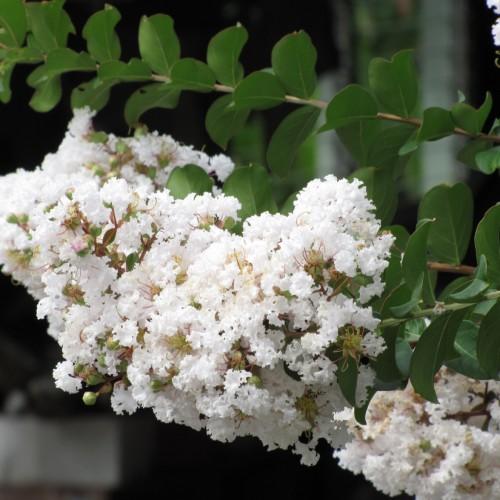
crape myrtle
Lagerstroemia 'JD900' EARLY BIRD WHITE
Cycle:
Perennial
Watering:
Average
Hardiness Zone:
7 - 10
Flowers:
Flowers
Sun:
Full sun
Leaf:
Yes
Growth Rate:
High
Maintenance:
Moderate
Salt Tolerant:
Yes
Care Level:
Medium
watering
Crape myrtle (Lagerstroemia 'JD900' EARLY BIRD WHITE) should be watered every 5-7 days or when the soil feels dry. The best time to water is in the morning or early evening, when the sun is not at its hottest. When watering, make sure to thoroughly saturate the soil, and avoid getting the foliage wet. During hot, dry weather, the plants may need additional watering in order to maintain a healthy root system.
sunlight
Crape myrtle (Lagerstroemia 'JD900' Early Bird White) grows best in sunny conditions with 6 to 8 hours of direct sunlight each day. This sun-loving plant should receive 2 thirds of its sunlight in the morning and 1 third in the late afternoon for optimal growth. When situated in cool or cloudy environments, the Crape myrtle should be exposed to a minimum of 4 hours of direct sunlight each day. In hot climates, however, ensure the Crape myrtle has either shade or indirect light for up to 4 hours during the hottest part of the day.
pruning
Crape myrtles (Lagerstroemia 'JD900' EARLY BIRD WHITE) should be pruned in late winter or early spring. This will help ensure healthy blooms during the summer months and ensure that the tree maintains a good shape. Be sure to remove any dead branches and any branches that are crossing each other or rubbing against 1 another. This will help promote airflow and reduce disease. Furthermore, pruning should be used to create an open form to the tree. This will allow for light to reach all parts of the tree. When cutting back the tree, it should be done with proper hand tools (such as loppers, pruners, or shears). Make sure to use sharp tools and avoid cutting back too far; otherwise, the tree may become weakened or potentially stressed. Finally, it is important to be selective when pruning crape myrtles. Pruning should focus on removing dead wood, crossing branches, and shaping the tree. Be sure to avoid topping the tree or excessive pruning, as this can cause serious damage.
